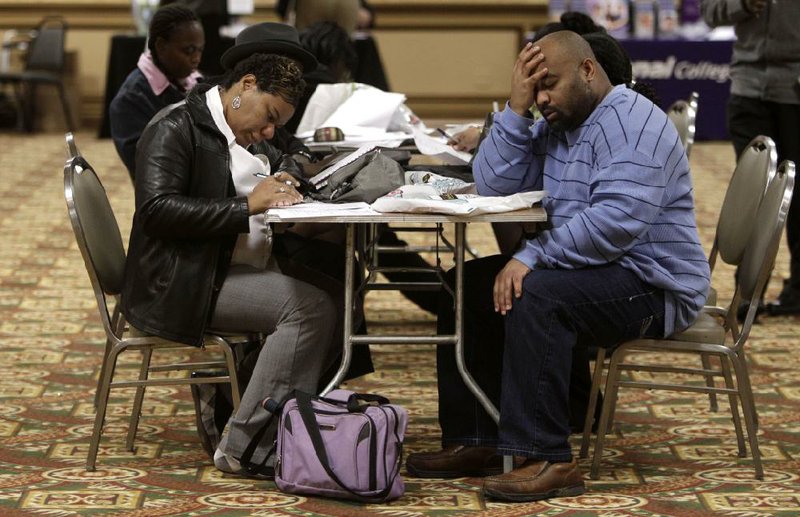WASHINGTON — The number of people seeking unemployment benefits dipped slightly last week, though not by enough to suggest that hiring is picking up.
Weekly applications for unemployment benefits declined 2,000 to a seasonally adjusted 402,000, the Labor Department said Thursday. That’s the fourth drop in six weeks.
The four-week average,a less volatile measure, rose to 405,500. The average had fallen to a six-month low two weeks ago.
A second report from the National Association of Realtors said the number of home buyers who signed contracts fell again in September.
Despite the recent declines, unemployment benefits applications are stuck above 400,000, where they have been for all but two weeks since March. Applications need to fall consistently below 375,000 to signal sustainable job growth. They haven’t been below that level since February.
The report shows that layoffs have stabilized at the lowest levels since the spring.
That’s “a very welcome development in the context of the steep decline in business confidence,” said Ian Shepherdson, an economist at High Frequency Economics, in a note to clients.
“Businesses are not happy about the economy, but neither are they in panic mode,” he said.
The number of people collecting benefits fell sharply to the lowest level in more than three years. That’s a positive sign that hiring could be improving. The unemployment benefit rolls dropped 96,000 to 3.65 million.
That doesn’t include several million additional people who are receiving benefits under an extended benefit program put in place during the recession and paid for by the federal government.
All told, 6.7 million people received benefits in the week ending Oct. 8, the latest data available. That’s down about 15,000 from the previous week.
Employers have added an average of only 72,000 jobs a month in the past five months. That’s below the 100,000 per month needed just to keep up with population growth. And it’s down from an average of 180,000 in the first four months of this year.
In September, the economy generated 103,000 net jobs.
The number of Americans who signed contracts to buy homes fell for the third straight month in September after the spring-and-summer peak buying season failed to entice new buyers.
The National Association of Realtors said Wednesday that its index of sales agreements fell 4.6 percent last month to a reading of 84.5.
A reading of 100 is considered healthy. The last time the index reached that high was in April 2010, the final month that buyers could qualify for a federal tax credit that has since expired.
Contract signings are usually a reliable indicator of where the housing market is headed. There’s typically a one- to two-month lag between a contract and a completed deal.
But the Realtors group said a growing number of buyers have canceled contracts after appraisals showed that the homes were worth less than the buyers had bid. A sale isn’t final until a mortgage is closed. That means more “pending” sales aren’t turning into final sales.
“It is especially troubling given the big August decline in long-term interest rates,” said Pierre Ellis, an analyst at Decision Economics.
Homes are the least expensive they’ve been in decades. Long-term mortgage rates are hovering at record lows near 4 percent. Prices in some metropolitan areas have been cut in half. Still, sales in most areas remain weak.
In part, that’s because loans are harder to get. Many lenders are requiring 20 percent down payments and strong credit scores to qualify.
Sales for previously occupied homes are on pace to match last year’s 4.91 million sold, the fewest since 1997. In a healthy economy, Americans would buy roughly 6 million homes each year.
Information for this article was contributed by Derek Kravitz of The Associated Press.
Business, Pages 27 on 10/28/2011
